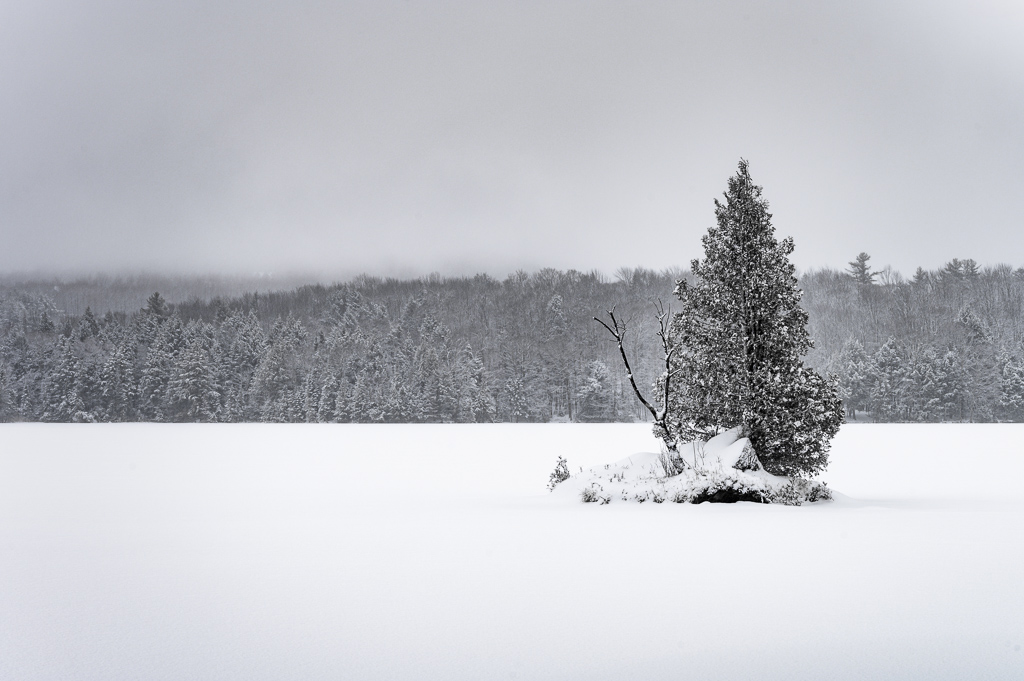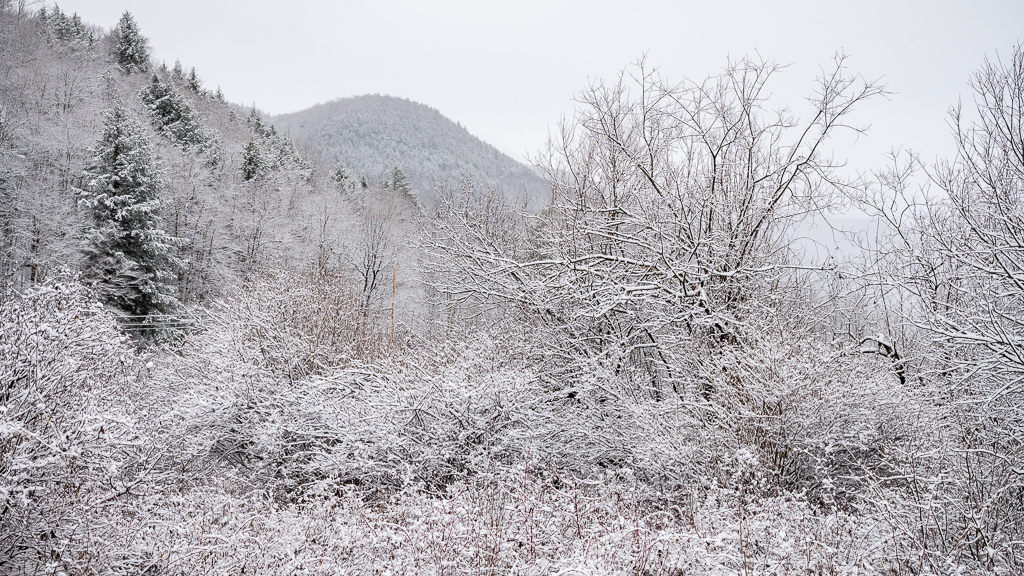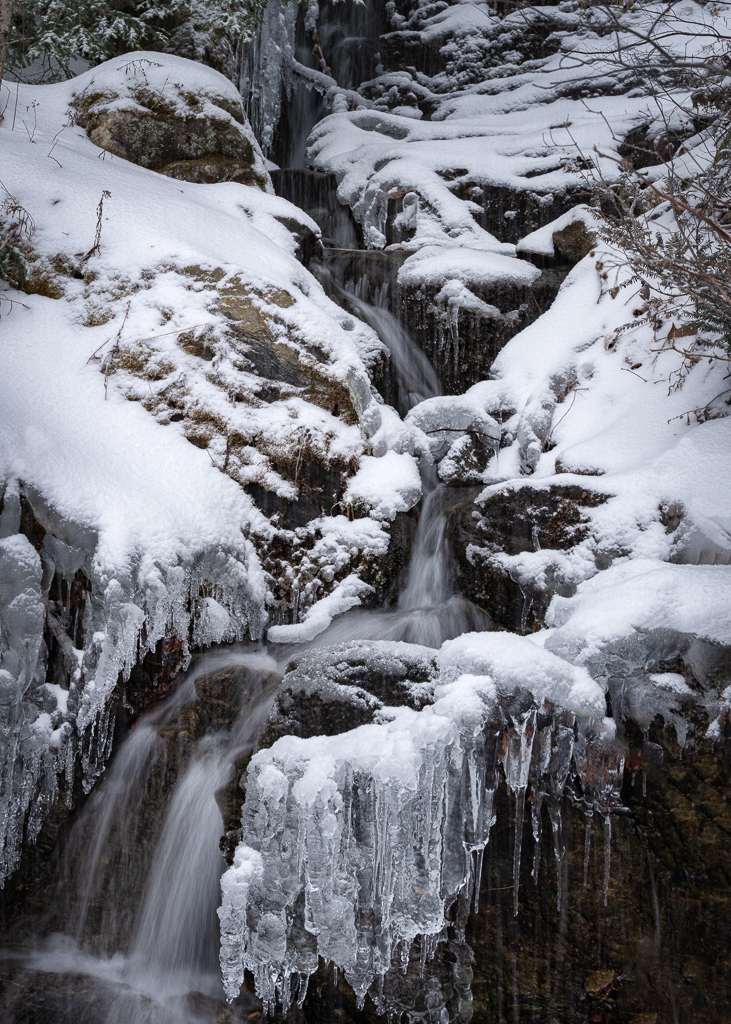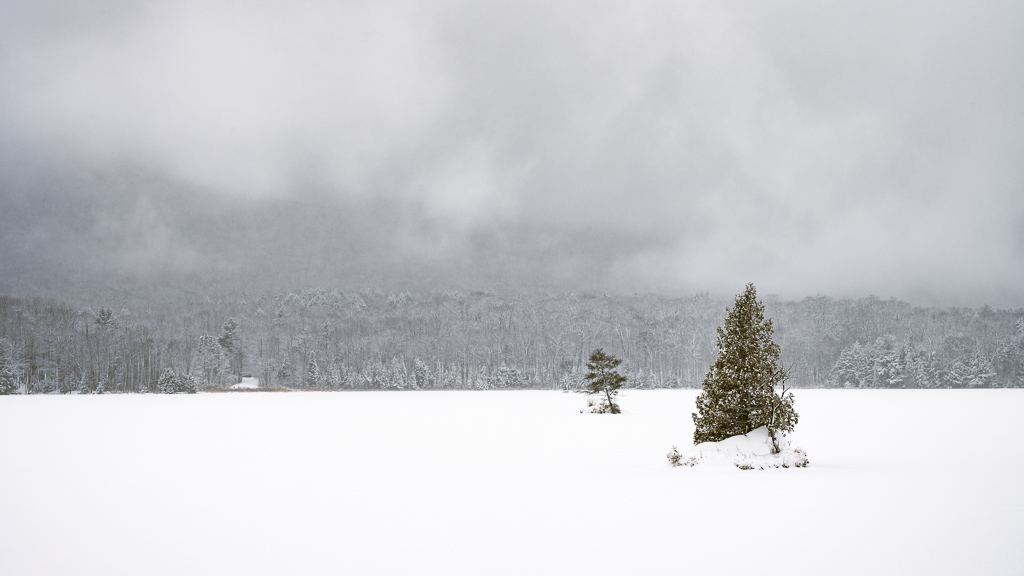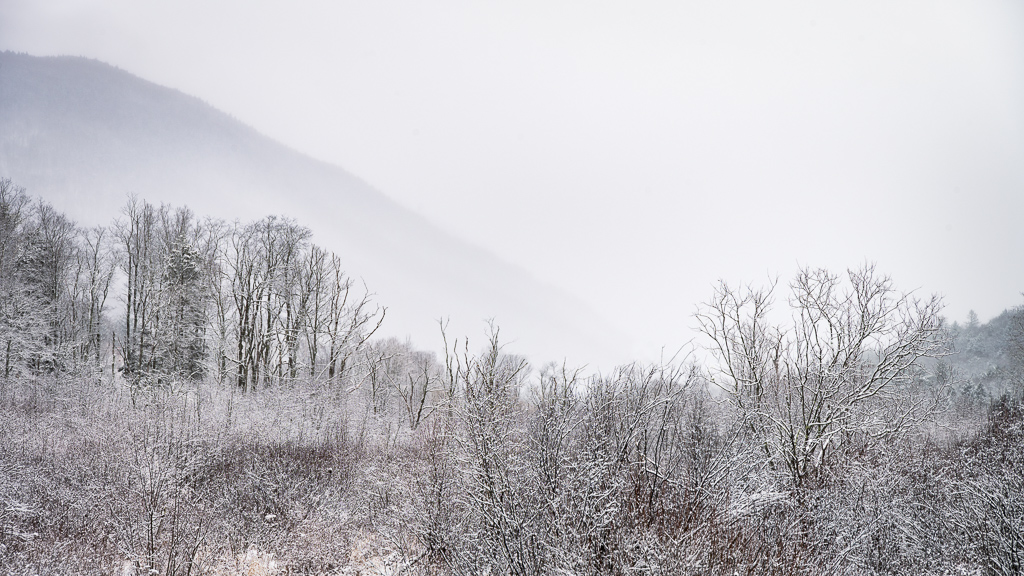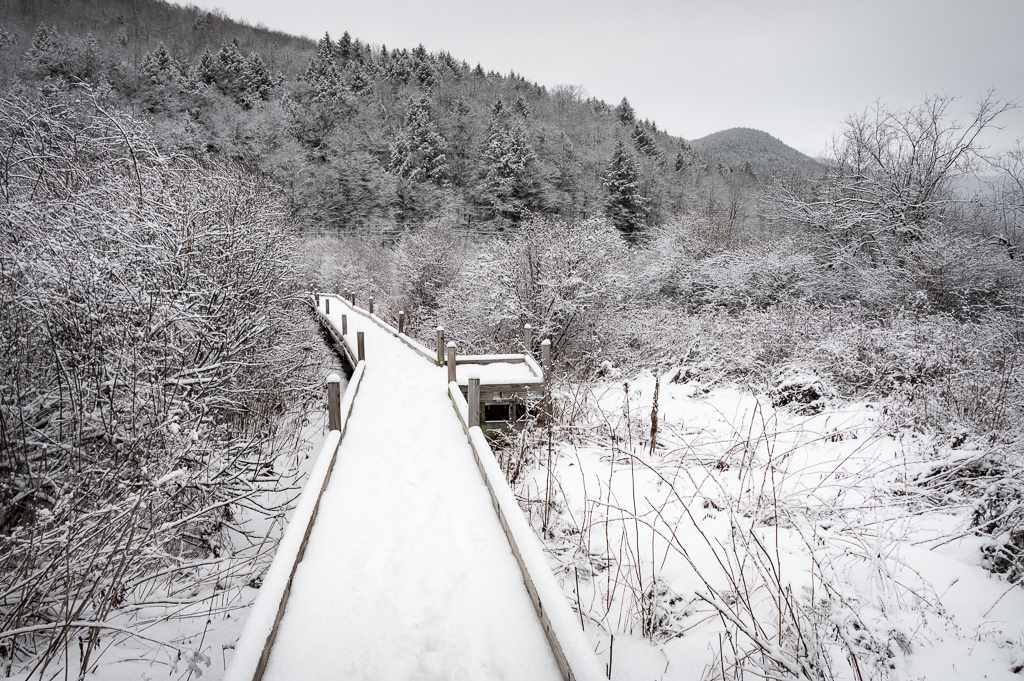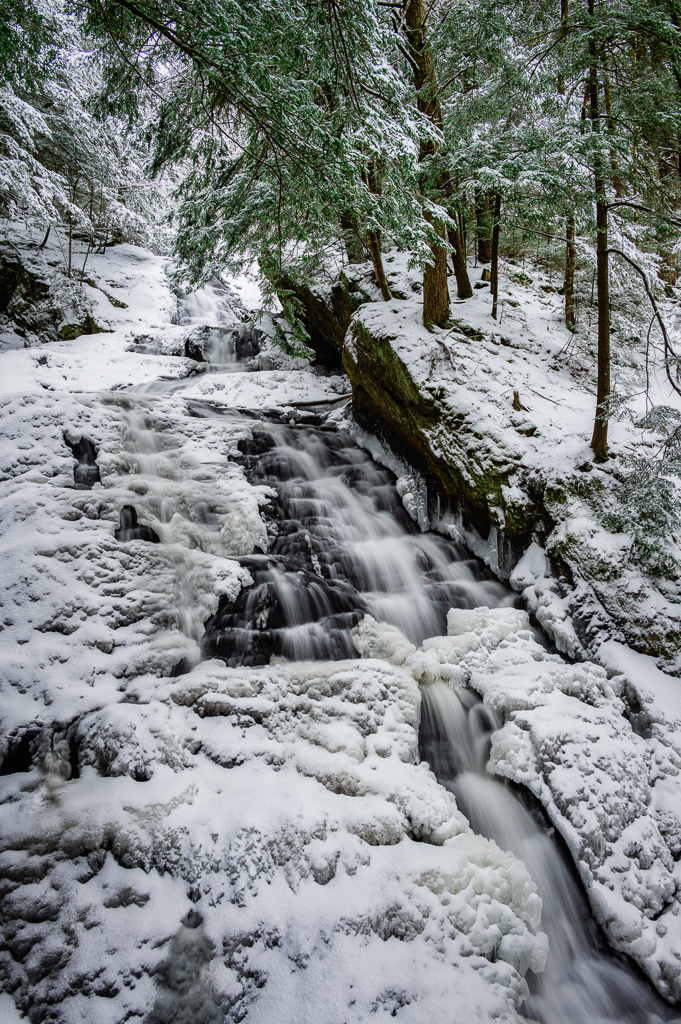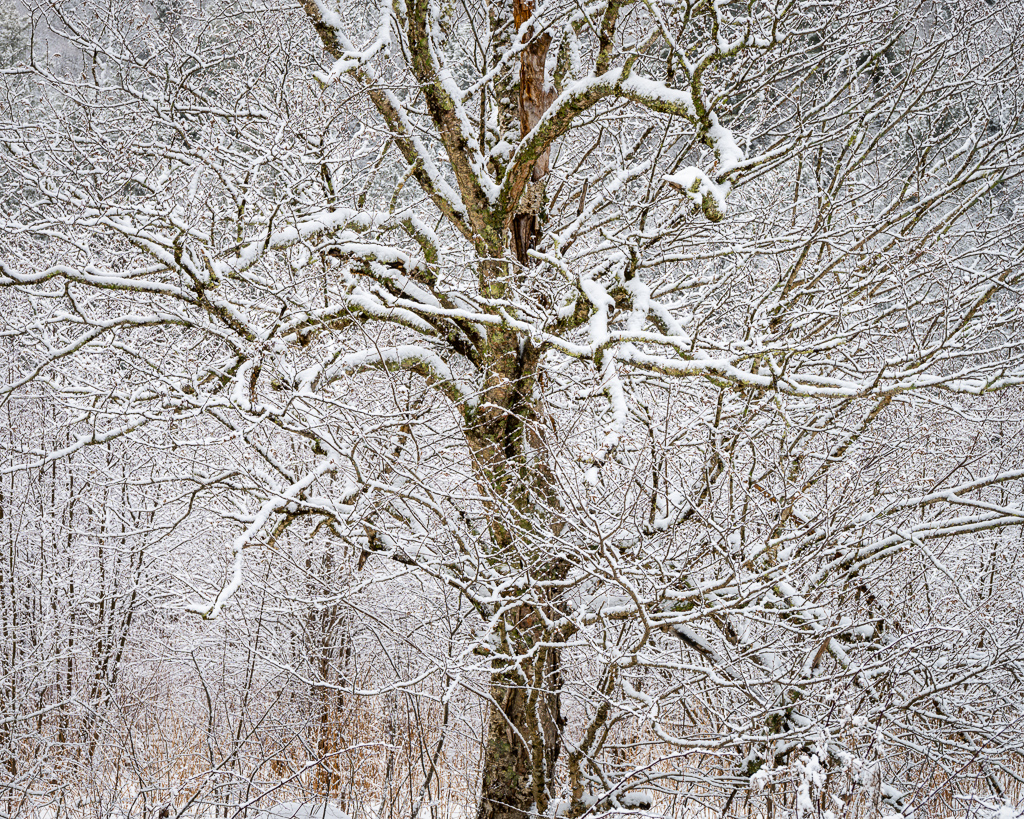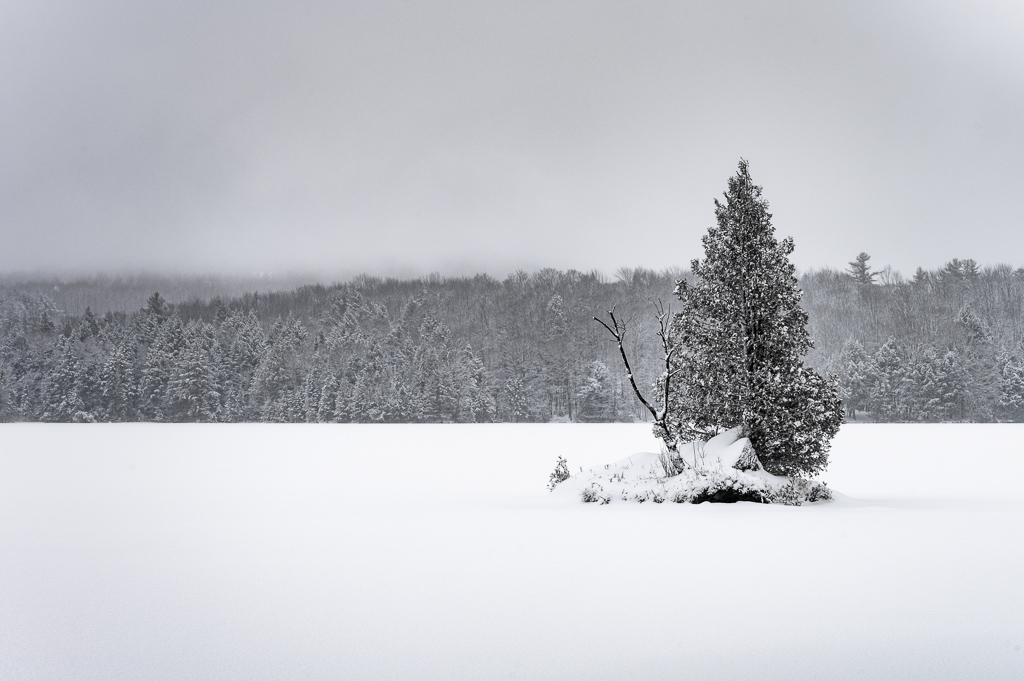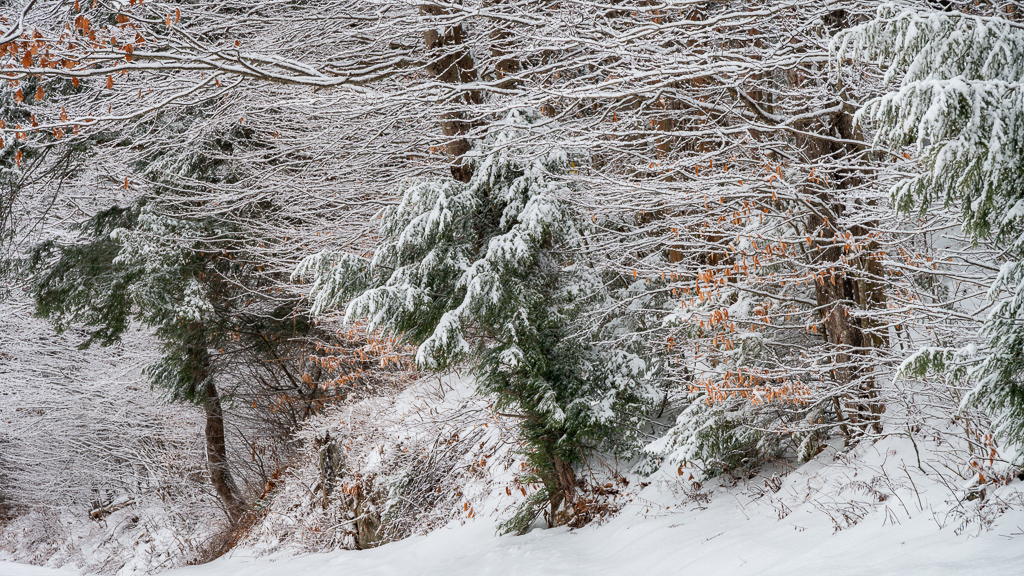With 2020 in the rearview mirror, and nobody upset about that, I, like everyone else, look forward with hope and promise towards 2021. Spending weeks surrounding the end of 2020 and the beginning of 2021 left me hoping for some winter weather (snow) to kick off my new year of photographic excursions. I wish came true right as the new year kick-off with a healthy snowfall just as 2021 was getting its feet wet.
My target for this trip would be the areas of the Appalachian Trail just north of Killington mountain. It had been snow highly as I arrived at my chosen location around sun up. Within twenty minutes of getting there and getting my gear and myself prepared, it started to snow heavily and stayed that way for well over an hour. It was too heavy to take out my equipment or to start my hike, so I had to wait it out in my car. I was fine with this since I knew that all this new snow was just what I needed for some excellent photo opportunities. I would have to wait it out.
I had the trail parking to myself, which meant lots of clean white snow-free from footprints and other blemishes. All I needed now was a window in which the snow could subside, and I can get going. I don’t need it to stop; just let up. It did, and I was able to get going.
Since it was still snowing, I had to limit my equipment choices and bring the right equipment. I was using my Nikon Z6 mirrorless camera with the brand new 24 -200mm Z lens. This lens, which had just been released, was not a fast piece of glass (meaning it does not possess large F-stop settings), nor was it part of the elite “S” class lens. Regardless, the focal length is perfect for this excursion since switching out lenses when it is cold and snowing is never recommended, plus the lens and camera are weather sealed. I did have my Nikon 14- 30mm F4 lens with me but never needed it. When bringing your equipment out in these conditions, there is a shortlist of items you need to make sure your trip is successful. These items are not “equipment” in the traditional sense but none the less, still important. You will need a weather cover for your camera, nothing fancy or expensive. I use a simple, clear plastic cover sold at camera stores for $5. After a couple of trips, you will need a new one. You can be inventive here; I have seen photographers use a shower cap from the hotel of just a clean rag draped over the camera. A small blower is helpful to keep snowflakes and moisture off the front of your lens. Your lens cap helps with that too. A clean, dry rag is also recommended. You will be drying things off constantly.
Staying warm and dry is of paramount importance. It does no good to have all the right cold-weather equipment to take photos and not the right equipment to keep yourself warm and dry. A wet and cold photographer rarely bring back good images. You won’t be out there long enough. You spend more time trying to defeat the conditions than you do taking photos.
Stay warm and learn to use winter weather as a worthy subject.
